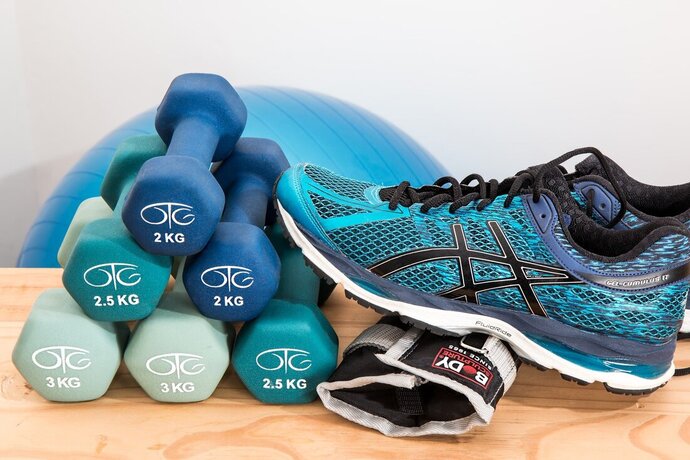When to take essential rest days from working out
By Jackie DiBartolomeo
November 9, 2020
Image Credit: Pixabay.com
With classes in full swing, it can be difficult for students to find their way to the gym to start a regular workout routine. But for athletes and fitness lovers, the opposite issue can arise. Students who are glued to the gym might not know when to give themselves time to rest. So when is it the right time to give your body a rest day from working out?
For Jen Sylvester, a certified personal trainer based out of the Washington, D.C. area, it is essential that her clients know when to take a rest day from working out.
When you are working out, you are breaking down that muscle in your body. Because of this, it is imperative that you take time after a workout to rest and allow those muscles to rebuild and recover, Sylvester said.
No two people are the same in what is right for their body and their workout routine. Sylvester works out every other day, but has most of her clients on a schedule of three days working out and then one rest day, she said.
There are several options to keep your body moving with low-intensity activities on that rest day, like light stretching, foam rolling muscles and gentle yoga, Sylvester said.
Brian Tinkler, a sophomore aerospace engineering and astronomy double major, works out every Tuesday and Wednesday in the Navy Reserve Officers’ Training Corps. He typically works out four times a week by himself, resting every few days to recover.
“I need to let my body recover from pushing it physically, and using a rest day won’t damper your progress, I think it’ll actually help it,” Tinkler said.
Tinkler is usually sore after lifting weights at the gym, and knows not to continue working a certain muscle group until it stops being sore, instead targeting different areas of his body for a well-rounded workout, he said.
Audrey Lin, a sophomore finance major and French and real estate development double minor, usually works out three to five times a week, doing either cardio workouts like running and biking, or yoga. As secretary of the University of Maryland Boxing Club, Lin also incorporates boxing into her workouts.
Everyone is different when it comes to what feels right for their bodies, making it difficult to gauge when to take rest days, Lin said.
“I do feel guilty about taking rest days sometimes because I feel lazy on those days when I take a break and it’s easy to extend that break and lose momentum,” Lin said.
Sylvester never feels guilty taking rest days, as she was taught to incorporate those rest days when she started her fitness journey, and teaches the same to her clients. But three days is her usual maximum number of rest days, and if she takes more than a week off, it starts to feel like she is going backwards, Sylvester said.
“It takes a long time to build a habit, but it doesn’t take very long to lose that habit,” Sylvester said.
Whenever she finds herself losing momentum to workout, Sylvester reminds herself that working out improves her mood like nothing else.
“Knowing that I’m going to feel better afterwards is a really motivational tool for me to go in and just do it whether I feel like it or not, whether I’ve gotten four hours of sleep or eight hours of sleep,” Sylvester said.
While Sylvester keeps herself accountable for working out when she should, she also keeps her clients accountable for taking rest days when necessary. She does not allow clients to come more than five days in a row, making sure they are taking time to rest their muscles, she said.
“My clients know that rest days are important. I talk about that with them at the very beginning,” Sylvester said, “They will perform better if they take a rest.”
|
|
Learn more |
© COPYRIGHT 2020. ALL RIGHTS RESERVED.
|
